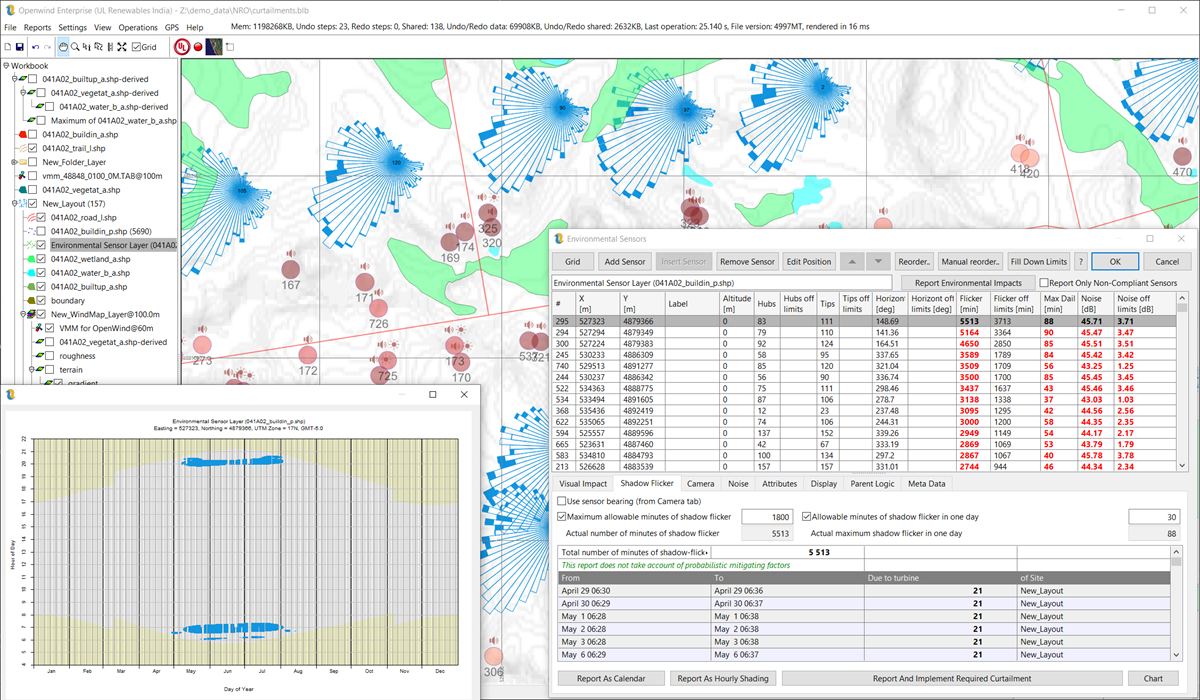Openwind 2.0 is here
September 9, 2024
We are excited to announce significant enhancements to Openwind that will elevate your wind farm development process.
Highlights of the new Openwind 2.0 update include:

Interactive Display of Environmental Sensor Compliance
Gain real-time insights into environmental sensor compliance with visual indicators for noise, shadow flicker, and other environmental factors. This enhanced feature empowers users to make informed decisions and ensure project adherence to regulations.

Advanced Wake and Blockage Modeling
Leverage the latest wake models (ASM and MSC) to optimize wind farm layout and energy production. Accurately model complex terrain and turbine interactions for improved project performance and reduced energy losses.

Comprehensive Support for Floating Turbines and Complex Substations
Openwind now offers advanced capabilities for modeling and optimizing floating wind farms with capacity-limited substations. Key features include:
- Automatically place multiple substations using k-means clustering.
- Simulate floating turbines with taut mooring lines for a realistic turbine modeling.
- Optimize project design with the ability to mix fixed and floating foundations.
- Incorporate substation capacity limits for accurate performance evaluation.
Enhanced Data Integration with UL WindNavigator
Openwind seamlessly integrates with UL WindNavigator Dashboards, providing access to a vast array of high-resolution geospatial data. This includes elevation data (SRTM30), bathymetry (GEBCO 2024), land cover (ESA 2021 World Cover), canopy height data (ETH Global Sentinel-2 10m), and vector data (OpenStreetMap). Users can effortlessly order new or download previously acquired Wind Resource Grids (WRGs) and Wind Resource Blocks (WRBs), streamlining the data acquisition process and accelerating project development.
Enhanced Scheduling and Wind Sector Management
Openwind offers a significantly improved scheduling interface, providing greater flexibility and control over project optimization. Key enhancements include:
- Categorize scheduling losses by type (e.g. environmental, noise, visual) for precise analysis.
- Incorporate humidity, precipitation, and turbulence intensity data for more accurate simulations.
- Handle WSM in both frequency and time series domains for comprehensive project evaluation.
- Benefit from a redesigned user interface for efficient workflow.
These new features demonstrate our continuous commitment to providing you with the most advanced tools for wind farm design and optimization. Should you have any inquiries, proposals, or simply an interest in exploring our digital solutions, we warmly invite you to reach out to us.
Sign up for a complimentary trial of Openwind
Should you have any inquiries, proposals, or simply an interest in exploring our digital solutions, we warmly invite you to reach out to us.